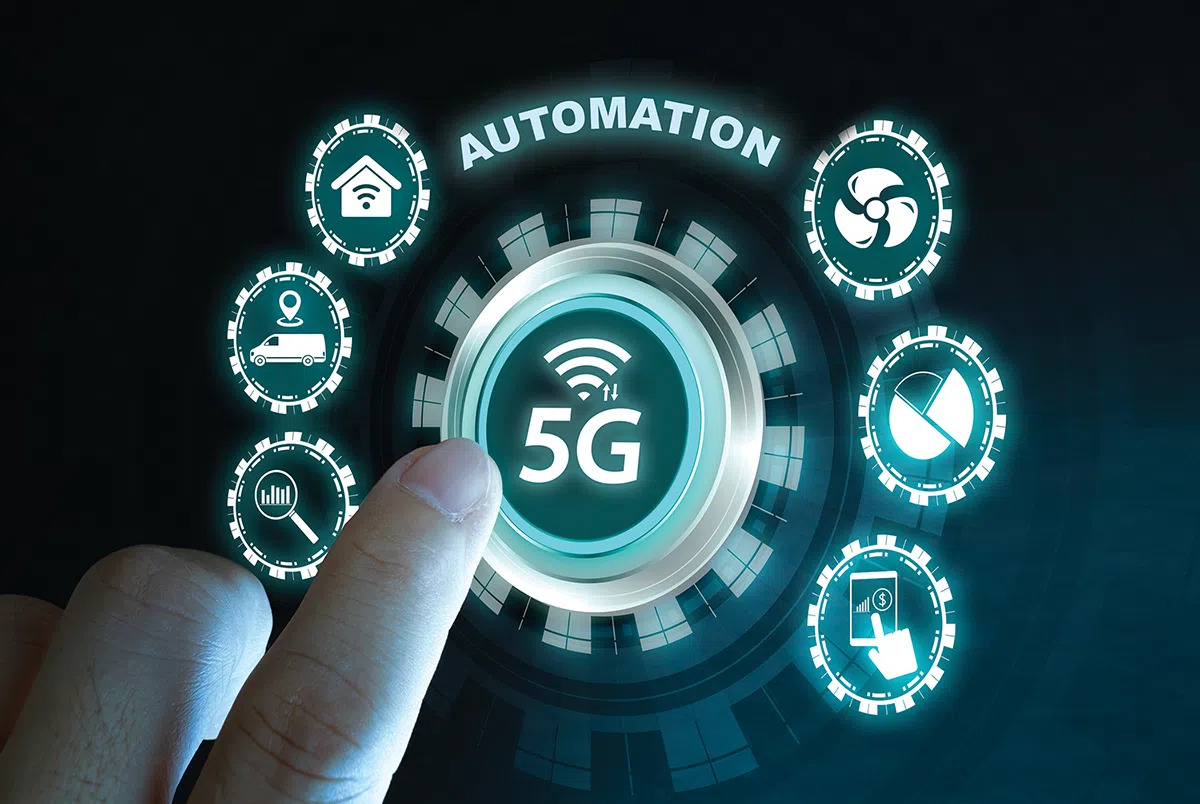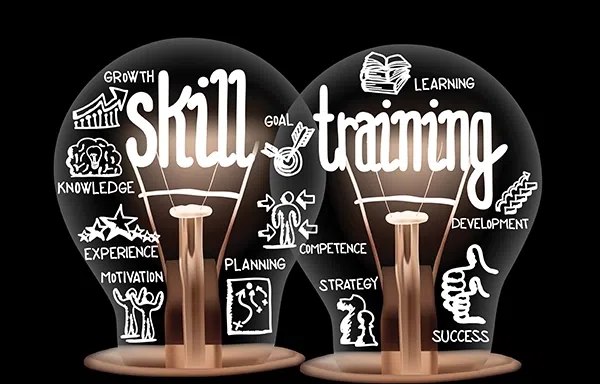The 5G network is gaining prominence worldwide and will undoubtedly impact HVACR automation opportunities and consequently, smart systems installations. Here’s a look at what contractors in this space should know about what’s ahead.
5G Rollouts are Happening Slower than Clients Expected
Clients interested in immediately getting 5G-related solutions when investigating new HVACR products may find little-to-no options in terms of products that have gone through extensive real-world testing. That’s because many of the possibilities remain in the early stages of development.
While it’s true that 5G and automation advances mean that internal HVACR automation, including fleet GPS apps will get faster and smarter, keep in mind, the decision to make automation upgrades does not only refer to your internal systems and the respective impact. Automation and 5G upgrade requests are increasing in scale based on customer demand for residential smart applications as well as requests for commercial building upgrades. It’s important to educate yourself while you have time so can be a more valuable resource for clients. What you will likely learn is that the 5G rollout is not moving as quickly as once predicted.
One example is the partnership between Siemens Smart Infrastructure and Qualcomm Technologies Inc. The goal for this pairing is to see how well a private 5G network works for running smart HVACR technologies. The tests will occur on a proof-of-concept 5G infrastructure developed within a Siemens facility in Illinois. However, development is still ongoing. According to Qualcomm, the team intends to prove every step of the 5G customer adoption journey, from system design to integrating connected devices into cloud-based solutions. The takeaways from this real-world experience in the test facility will undoubtedly become valuable for contractors who want to help their clients upgrade their HVACR automation systems.
5G Automation & Automation Upgrades Require Planning
For any HVACR contractors’ customers who want to upgrade to 5G technology once it’s available, they should do intensive planning first.
Advice during the upgrade consideration includes:
• Plan the financials – what is the budget solely dedicated to the 5G rollout?
• What features should the 5G-enabled HVACR system include?
• Will the deployment occur in an existing building or one under construction?
• Does the client want to do a small-scale trial before the full rollout?
• Clarifying the answers to these questions ensures everyone will be on the same page.
Existing HVACR Automation Solutions Highlight the Possibilities
Contractors can remind customers who are curious about what to expect from 5G. Highlight the possibilities by explaining what smart HVACR systems can do. The improved network will make any current advantages even smarter and more apparent. For instance, a smart thermostat can save money on energy bills. But it can also “understand” the users’ preferences. These kinds of perks are especially welcome in smart buildings with dozens or even hundreds of people working in them.
Other highlights of automation and smarter 5G rollouts include effects on the climate. A January 2022 report from Accenture shed light on how 5G rollouts could collectively help the United States reach its 2025 climate change mitigation targets. The coverage examined several areas, including smart buildings and the energy sector. It suggested that 5G use cases in those two areas, could achieve the equivalent of taking 72 million cars off the road each year in carbon dioxide reductions.
The examination of 5G in smart buildings and energy sectors studied factors like commercial HVAC controls, energy management systems, and green-powered microgrids.
However, the advantages of connected HVAC systems go beyond sustainability. They also let people enjoy better visibility and improve their maintenance strategies. Some commercial systems collect statistics and send them to remote technicians. Having that data in advance improves service calls because providers often have a good idea of the problem before arriving to investigate further.
Integrating Technology Into Buildings Requires Forethought
Now that people are becoming more aware of HVACR automation solutions, they’re increasingly considering them when assessing their annual budgets. The 5G network’s latency is as low as 1 millisecond, making it 50 times faster than 4G. That improvement results in faster communication, particularly when integrating the cloud.
However, HVACR professionals and others working on a smart building conversion must collaborate to assess whether the facility is ready for the upgrade or if it needs some changes first. Some places have legacy equipment that will work alongside 5G-enabled platforms or machines. Therefore, one of the first things to determine is how to make those assets communicate with each other – integration.
Mapping out the physical design of the 5G infrastructure will help prevent complications. A successful deployment requires the placement of antennas and cables throughout the building. Many telecommunications companies use specialized platforms to determine which areas of a city or community would have the best 5G coverage (towers can impact this coverage area). Aspects like tree cover and densely packed structures can negatively impact the network’s performance, as well as rural vs. city location.
HVACR contractors should suggest that building owners and managers do the same before deploying a smart building and consider any relevant questions.
• What infrastructure upgrades must happen so 5G meets a client’s expectations and specifications?
• How will a smart climate-control system link to a supporting building management platform?
Notably, any clients interested in smart buildings must also realize that the switch to 5G connectivity won’t happen all at once. Technologies running on the 4G and 5G networks will continue existing alongside each other for many years.
Professionals Should Educate Themselves About 5G Specifics
As interest in HVACR automation exploded, it required technicians to expand their skills and capabilities regarding new products and installation options. The increasing pace of 5G rollouts worldwide is similar because it will reshape how these professionals do their jobs and engage with clients.
Anyone working in the HVACR sector should assess how likely they are to assist with 5G-related installations in the future. If you are assessing, consider whether it’s worth the time to enroll in 5G-related training courses.
Nokia Bell Labs offers a professional certification program in industrial automation. It discusses how the 5G network is an essential enabler for many technologies that are now becoming more common in smart buildings and other commercial environments.
That’s just one example of a continuing education option that HVACR contractors may find interesting when taking steps to educate themselves. Even though the course material spans outside their daily work, such certifications could make contractors more relevant to the companies and clients that hire them.
The 5G Network Will Unlock Automation Potential
5G rollouts and network tests are still in the early stages. More people are beginning to understand how this technological advancement could enhance their lives and businesses as efforts gather momentum. The low latency and fast connection speeds associated with 5G make the network particularly suitable for artificial intelligence and the Internet of Things (IoT).
However, the 5G network will also enhance HVACR automation opportunities, making it easy to keep buildings comfortable and energy efficient. The more preparedness HVACR business managers and contractors do now, the better they can anticipate and meet customers’ needs.
Emily Newton is the Editor-in-Chief of Revolutionized (www.revolutionized.com), an online magazine discussing the latest industry innovations and trends.
1 Qualcomm, (11/22), ‘Light Reading’ Qualcomm, Siemens test 5G in HVAC systems, https://www.lightreading.com/private-networks/qualcomm-siemens-test-5g-in-hvac-systems/d/d-id/782039
2 Accenture, (1/22), ‘Accenture Newsroom’5G-Enabled Technologies Could Solve for One-Fifth of U.S. Climate Change Target by 2025,https://newsroom.accenture.com/news/5g-enabledtechnologies-could-solve-for-one-fifth-of-us-climatechange-target-by-2025-new-study-finds.htm
3 Moho Fahim, (1/2020), ‘RE Journals’ https://rejournals.com/why-walk-when-you-can-justteleport-how-to-get-your-building-5g-ready/, Why walk when you can just teleport? How to get your building 5G-ready.





